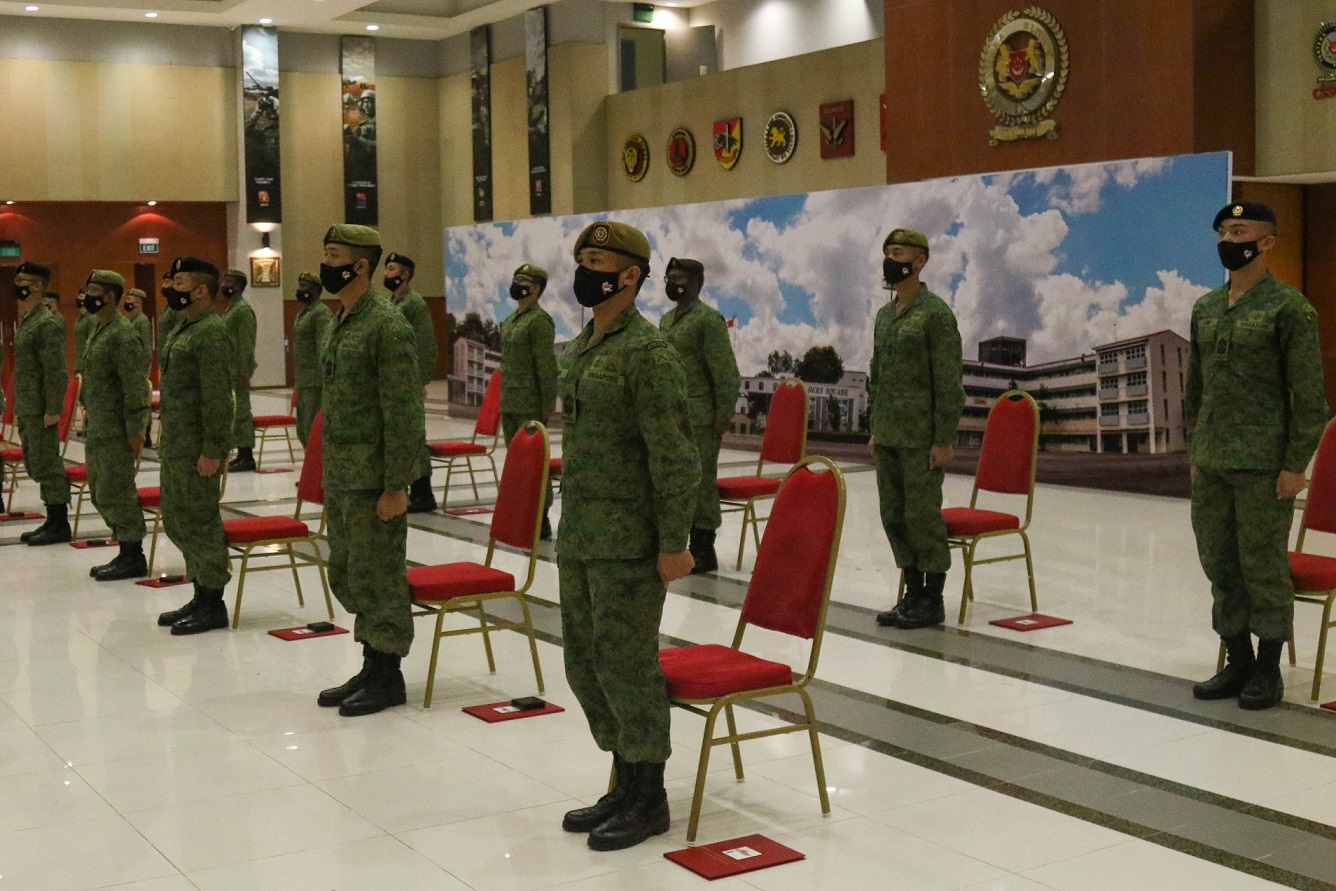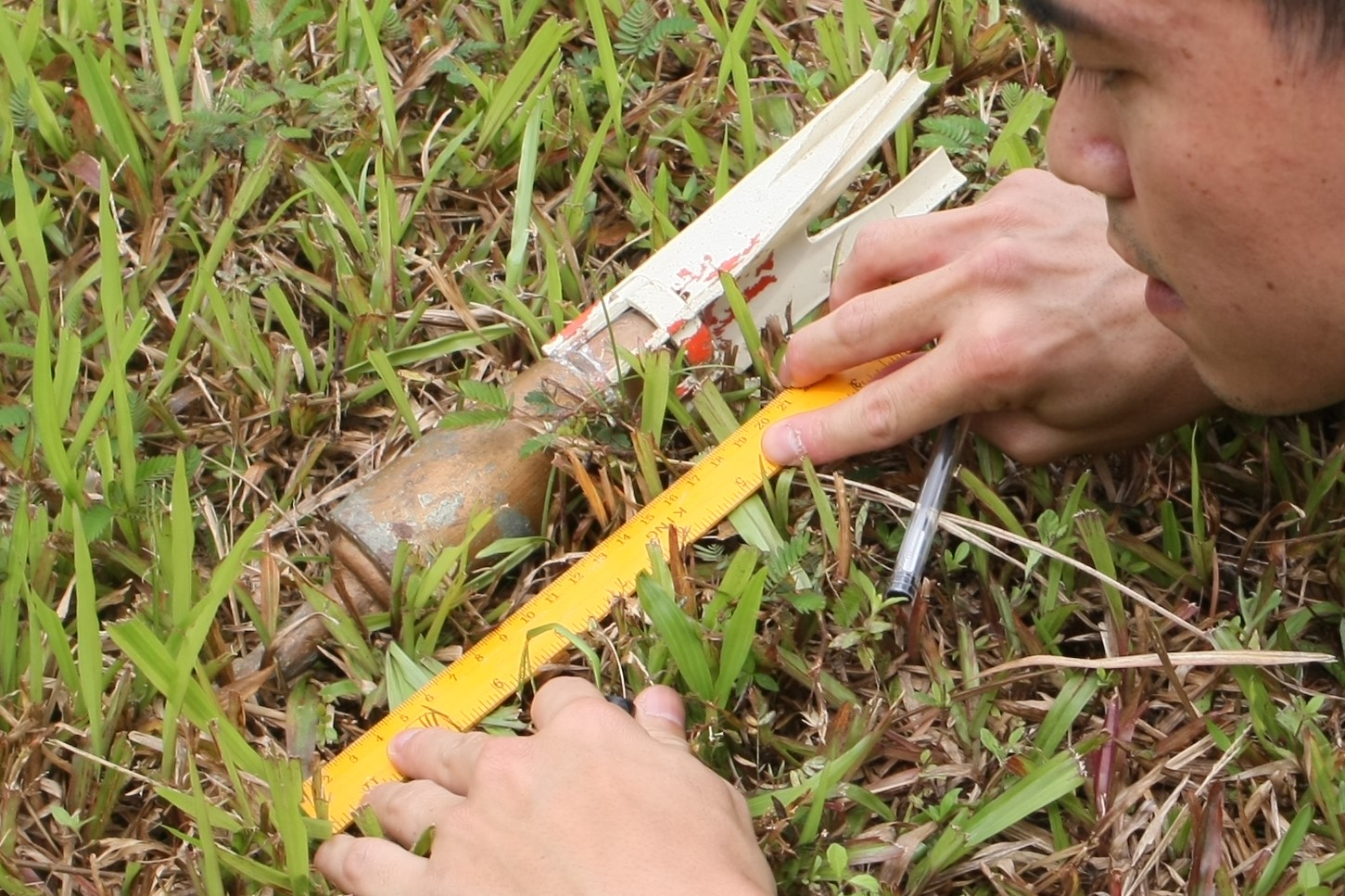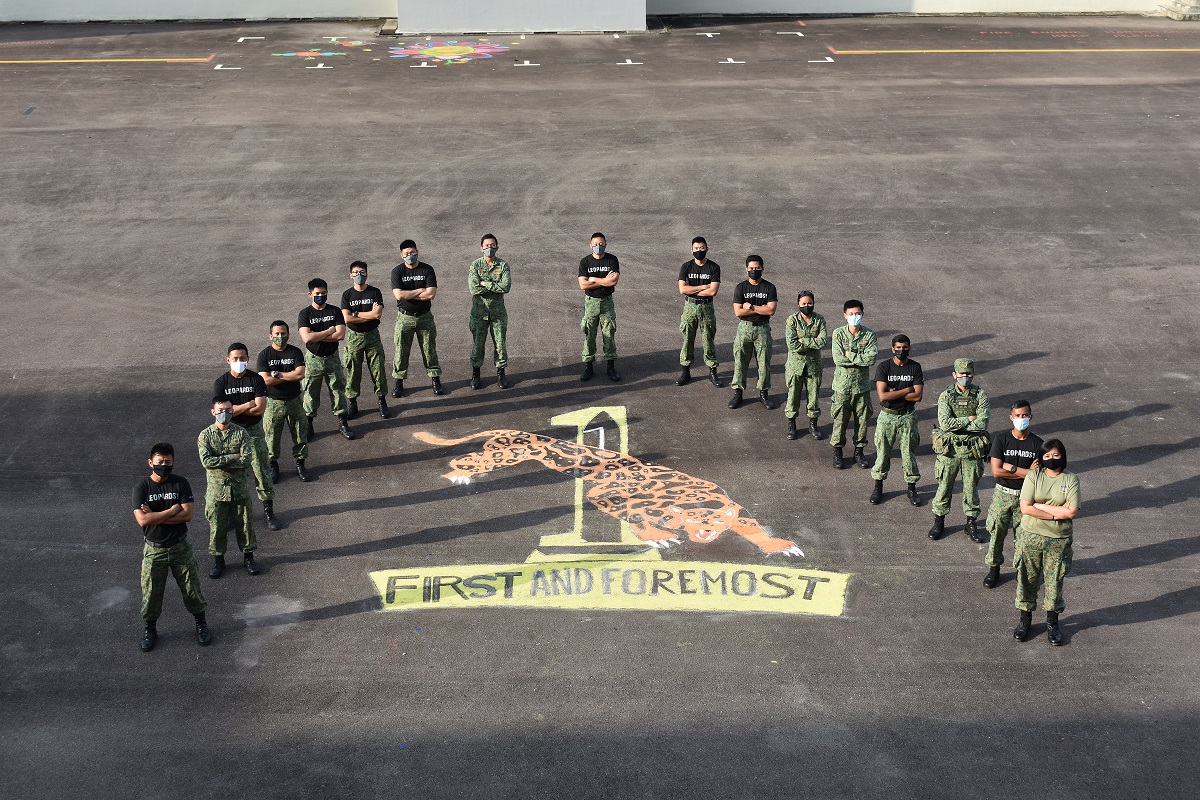 OPFOR soldiers taking cover and aiming in the building.
OPFOR soldiers taking cover and aiming in the building.
 Sparring Partner In Our Army – the OPFOR
Sparring Partner In Our Army – the OPFOR
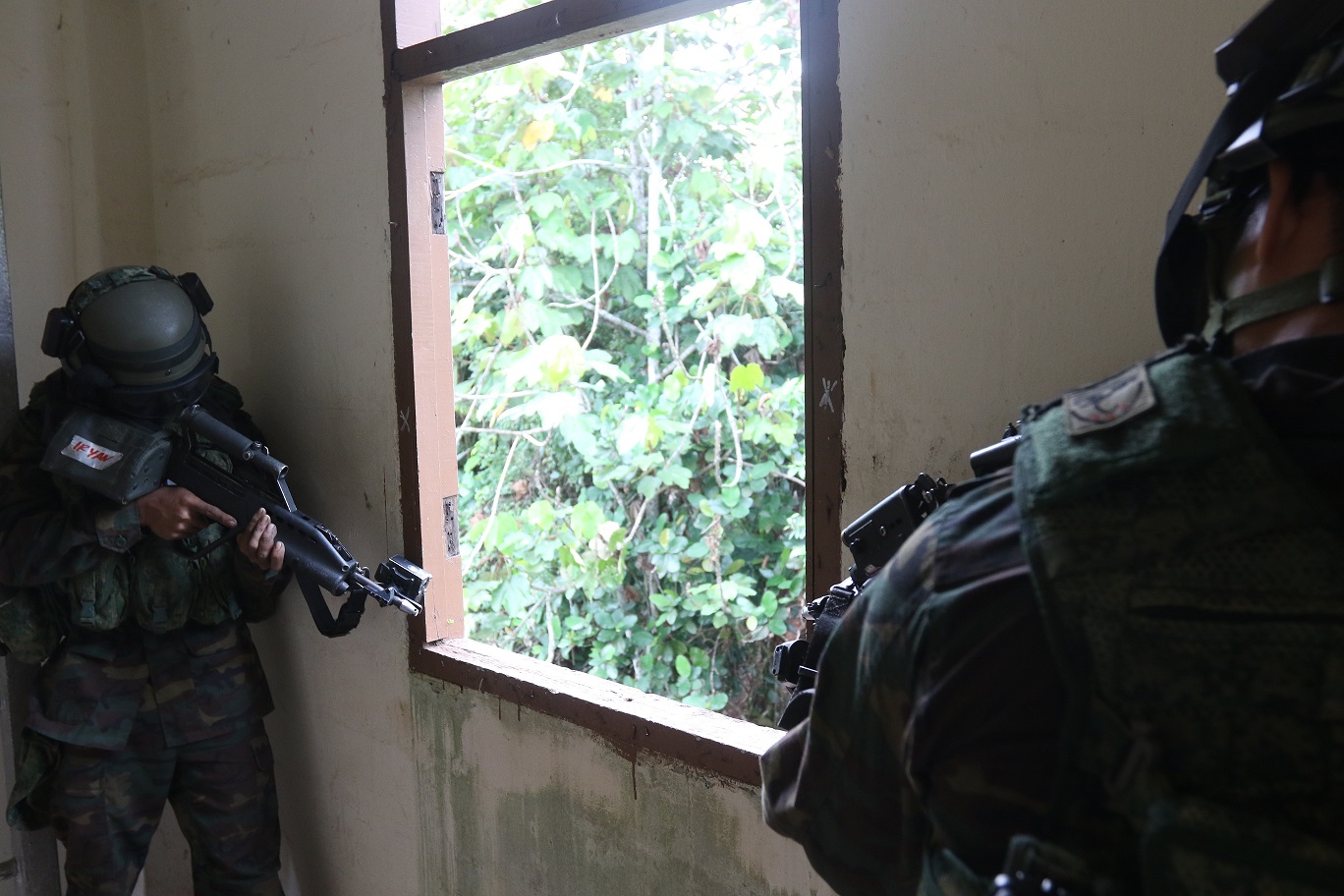
 OPFOR soldiers taking cover and aiming in the building.
OPFOR soldiers taking cover and aiming in the building.
Just like every student sitting for an exam, for each evaluation at the Army Training Evaluation Centre (ATEC), the focus is on the unit undergoing the evaluation and how well they fare. Little is known about the 'tester' – the Opposing Force (OPFOR), though they play an equally important role.
Tasked with the critical role of supporting the units' training and evaluation, the OPFOR has served as a professional, credible and respected enemy since ATEC was established in 1990.
We uncover some facts about the OPFOR and talk to some soldiers who are serving with the unit about their experiences.
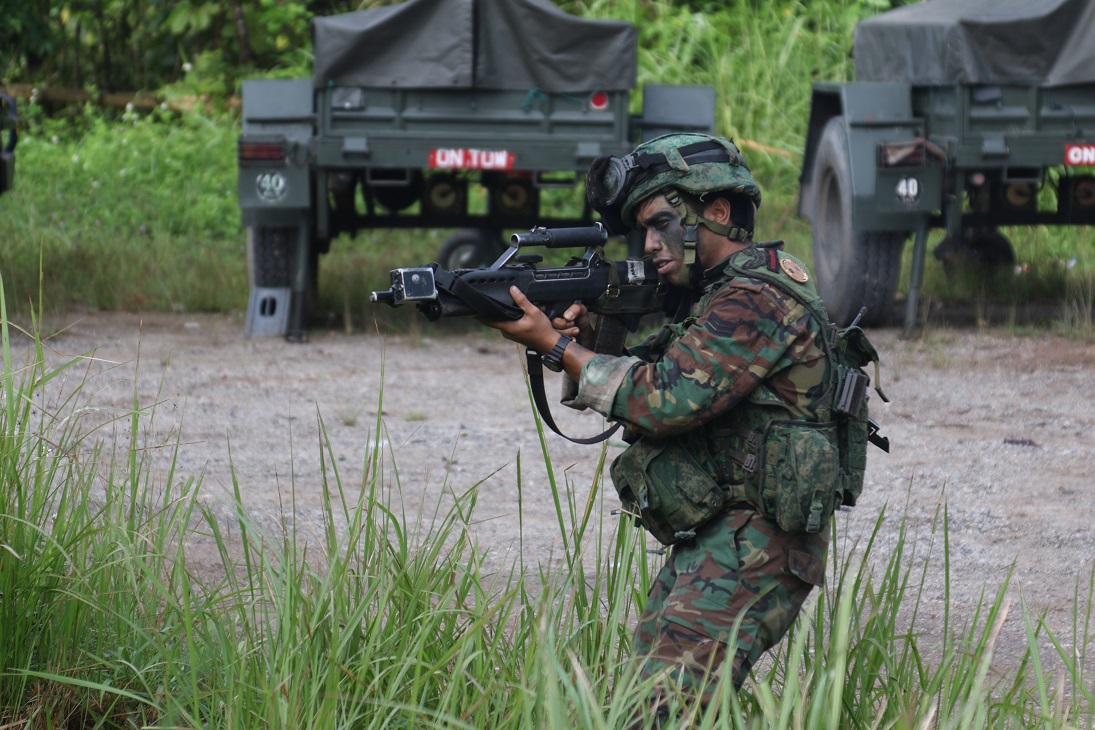
They are your 'enemies'.
The troops within the OPFOR serve as a realistic 'enemy', testing and validating the units' Standard Operating Procedures (SOPs). The approach used to test the units is based on assessment of their ability to operate as an integrated fighting force. The OPFOR adheres to a series of tactics, techniques and procedures when it 'fights' units under evaluation.
Fun fact: The OPFOR is often distinguished by their attire – they wear the old No.4 and are often designated as members of the Red Land Armed Forces.
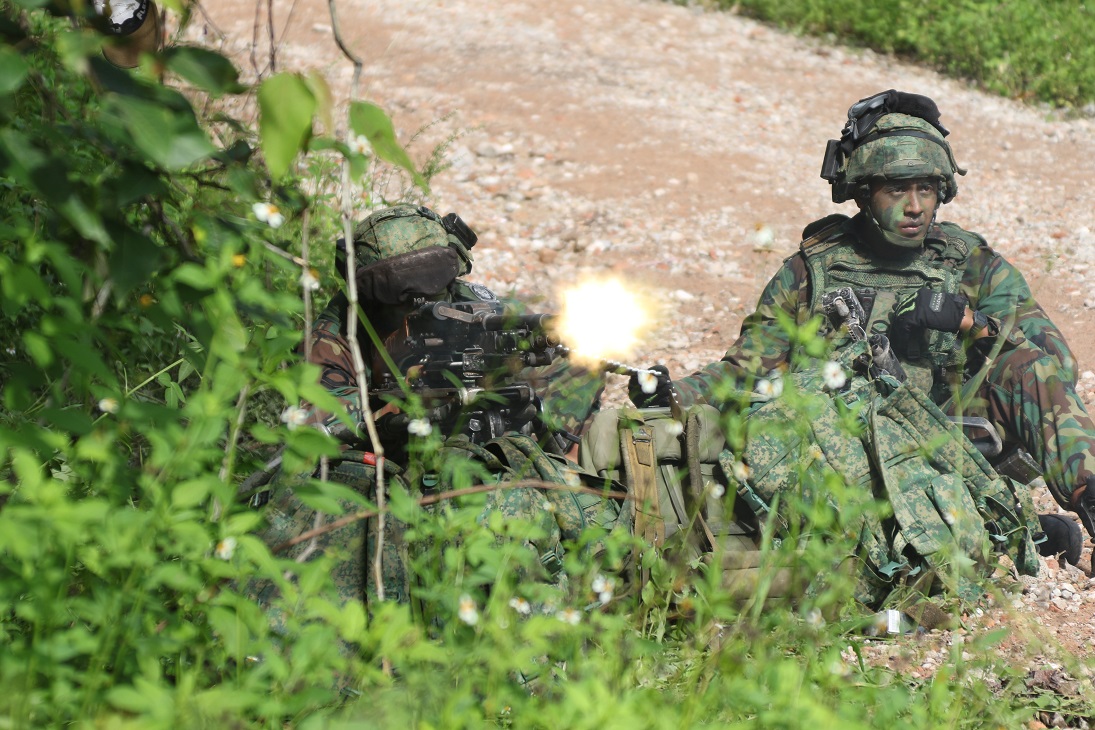
One of the OPFOR soldiers firing the General-Purpose Machine Gun.
They don't undergo any special selection criteria.
The selection criteria for OPFOR is no different from a conventional unit. There is an evergreen intake of troopers to form the weapons and tactics platoons. The troops, however, go through tough training that include numerous outfield exercises and repeated combat drills to hone their craft.
They are continuously improving themselves.
Though they do not undergo any evaluation, the OPFOR takes it upon themselves to continuously hone their SOPs for each outfield training and evaluation that they undergo. This ensures that they are of the highest standards, and provides all units undergoing ATEC a credible and challenging sparring partner.

One of the OPFOR soldiers taking cover in the building.
I had the opportunity to witness first-hand how the OPFOR swung into action during the latest ATEC evaluation of 3rd Battalion, Singapore Guards (3 Gds) earlier this month. Right off the bat, the OPFOR were deployed in the buildings that 3 Gds was tasked to capture, fiercely defending each building.
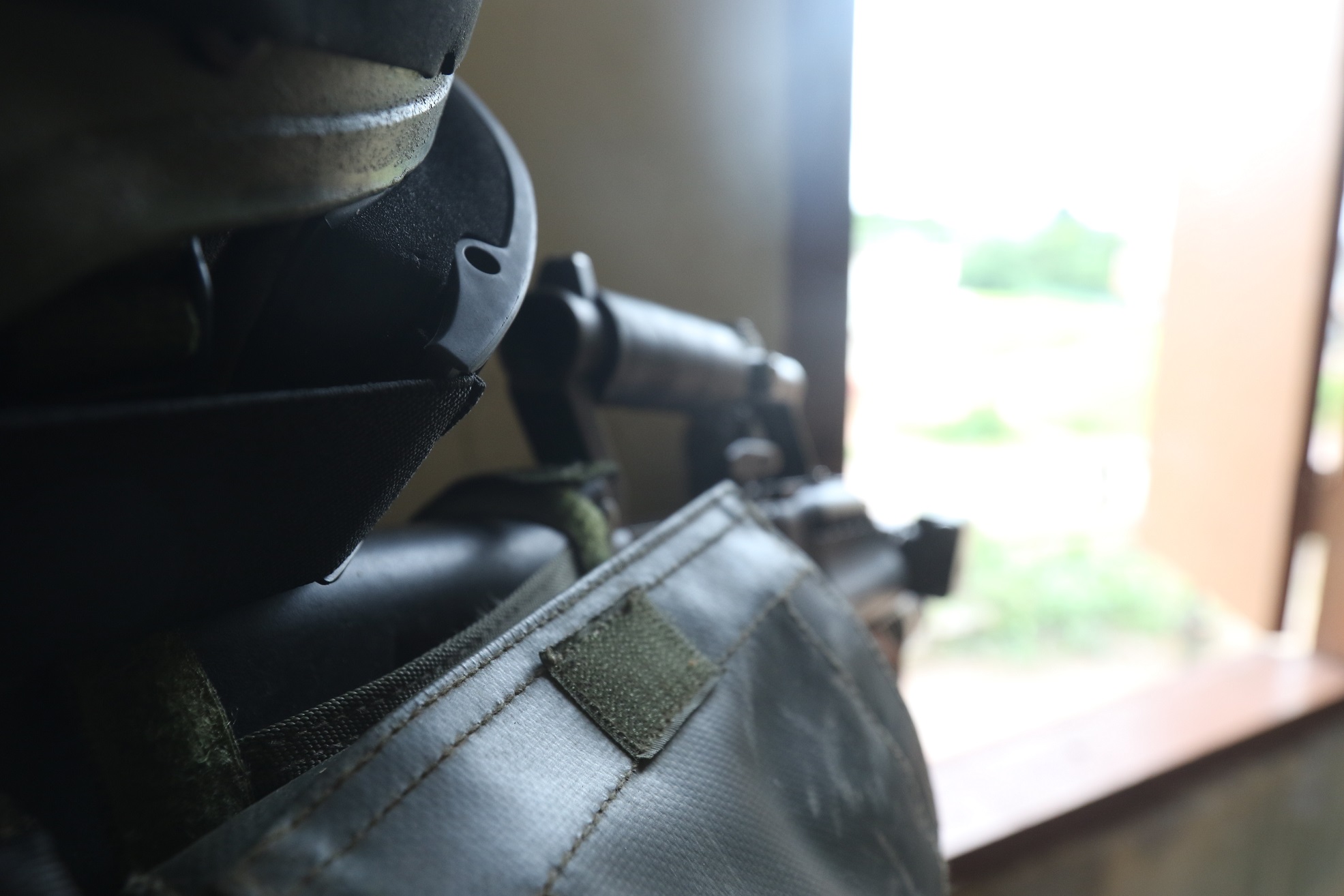
Sensing that the OPFOR were heavily entrenched in the buildings, the soldiers from 3 Gds executed a well-formulated plan to capture the objective. First, a smoke grenade was thrown in the direction where the OPFOR was positioned, forming a smokescreen for the Guardsmen as they launched their attack. The soldiers from 3 Gds quickly dashed towards the building, attempting to catch the OPFOR off-guard.
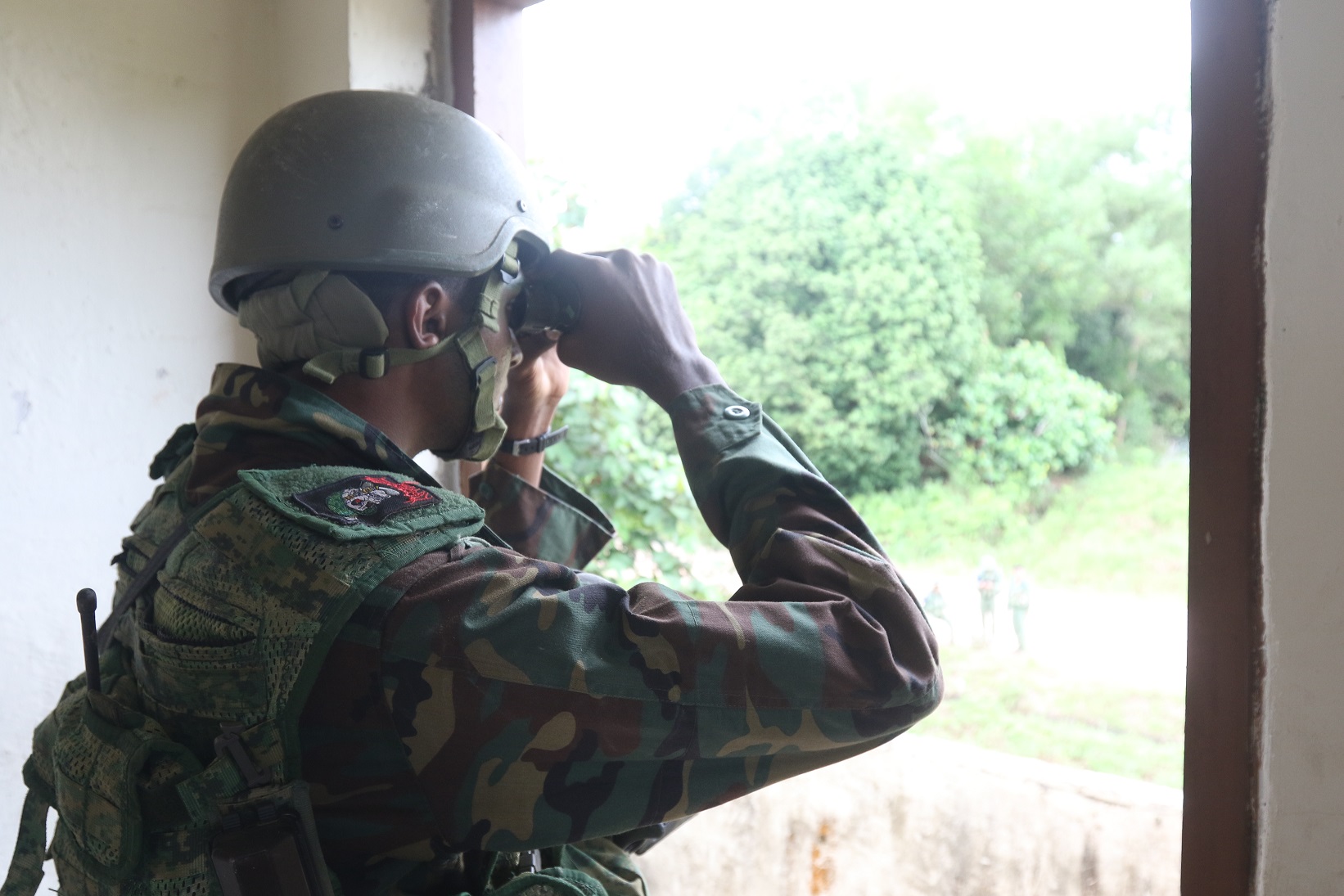
On the lookout for 3 Gds soldiers.
However, the smoke grenade landed a few inches shy, and the OPFOR machine gunner managed to ambush the soldiers from 3 Gds, wiping out an entire section. Throughout the evaluation, the soldiers from 3 Gds did not give up, even as the OPFOR guarded their ground aggressively. Eventually, soldiers from 3 Gds prevailed and managed to clear the buildings and capture the objective.
After the evaluation, I asked some of the servicemen in OPFOR to share their experiences.
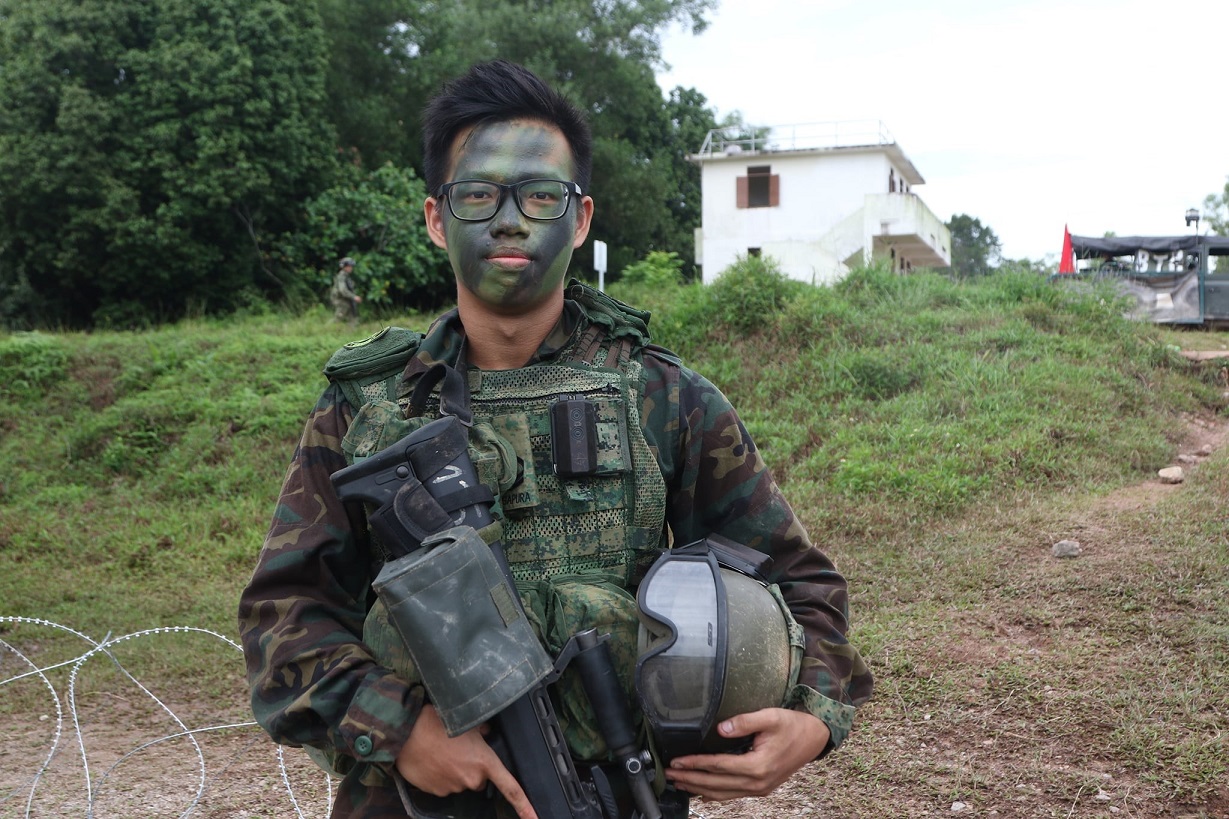
CPL Yong Joon Xiang, Section 2nd-in-charge
For CPL Yong Joon Xiang, a Section 2nd-in-charge, the role of an OPFOR soldier challenges him to put in his best during each evaluation. "It is pretty unconventional to play the role of an Opposing Force, and what motivates me to give my best is knowing that by putting up a good fight, the units undergoing evaluation can learn more, and Our Army will emerge stronger."
When asked what is memorable to him, CPL Yong talks about the sharing that they have with the units after the evaluation. "I find moments after exercises the most memorable. It is during such instances that as an OPFOR soldier, I get to interact with the units undergoing evaluation, exchanging different experiences and perspectives despite our conflicting roles."
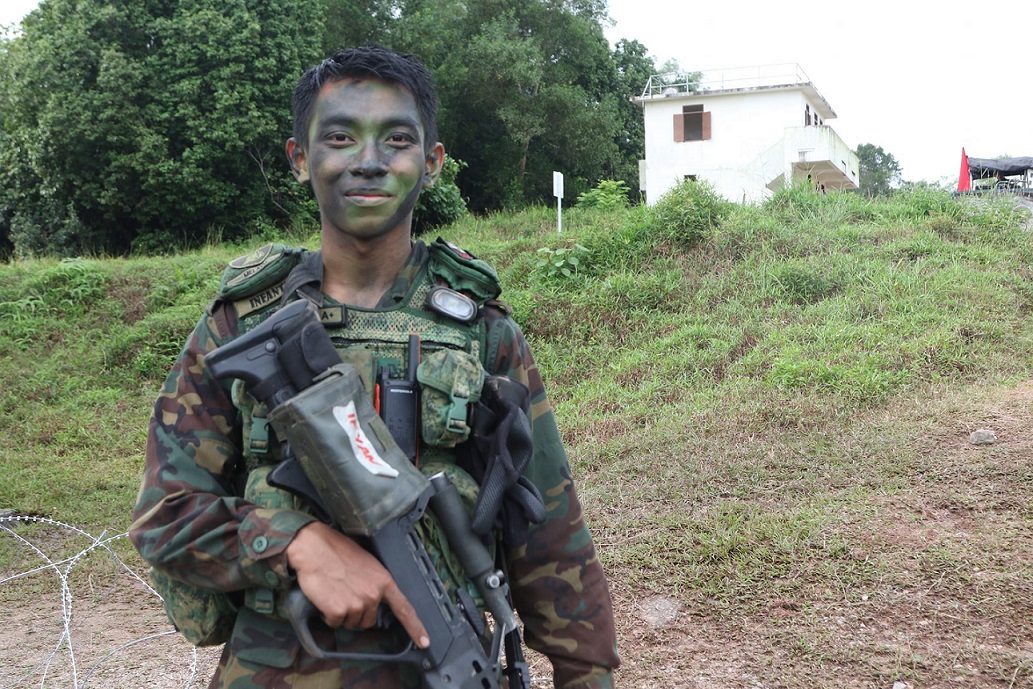
3SG Iryan Syazrian, Section Commander
For 3SG Iryan Syazrian, a Section Commander, he brims with pride after each evaluation exercise because it means that they have done their job well. "I feel satisfied after each exercise because it means we have pushed them to their limits and gave them a good fight. As an OPFOR, our job is to make their life tough so that when the day comes for them to defend Singapore, they will be at the peak of their performance. That is when we, as OPFOR, have done our job well to train the units."

2LT Shankar, Platoon Commander
As a Platoon Commander, 2LT Shankar shared: "OPFOR is the only unit that can help evaluate units and assess how effective they are as a fighting force. Just by knowing that we play this important role motivates me to give my best. We are like the unit's sparring partner and we push units to their limits so they can perform better and achieve their fullest potential."
Written by: PTE Stanley Ong (Army News)
Photography by: Army News


